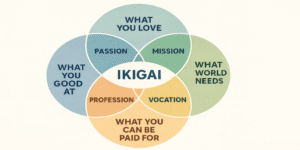The gig economy is a rapidly growing sector of the modern workforce, where people take on short-term, temporary, or freelance work instead of traditional, long-term employment. This form of work is often facilitated by digital platforms or apps that connect individuals with customers who need their services (Kässi, 2017). Gig workers – sometimes referred to as independent contractors – are typically hired on a per-task or per-project basis. This model has transformed how many people earn an income and has created both opportunities and challenges.
1.0 Key Features of the Gig Economy
1.1 Flexibility
One of the biggest appeals of gig work is flexibility. Gig workers can decide when, where, and how much they want to work. This is particularly valuable for those balancing other commitments such as family responsibilities, education, or part-time employment (Katz, 2016). Unlike traditional jobs with fixed hours, gig work allows people to structure their schedule around their lifestyle.
1.2 Variety of Work
Gig workers can take on a wide range of jobs depending on their skills, interests, and location. Some drive for ride-sharing companies, others deliver food, write articles, design graphics, provide virtual assistance, or even rent out property (DeStefano, 2017). This diversity enables workers to choose work that aligns with their abilities and preferences.
1.3 Digital Platforms
Digital platforms such as Uber, Deliveroo, Upwork, and Airbnb play a central role in the gig economy. They make it easier for workers to find jobs, manage tasks, and receive payments. These platforms handle much of the logistical work, making it simple for people to start earning without the complexities of running a full business (Sundararajan, 2016).
1.4 Supplementary or Primary Income
For some, gig work is their main source of income. For others, it serves as extra income alongside a traditional job (Eisenmann, 2016). Students, retirees, and part-time workers often use gig work to fill income gaps or achieve specific financial goals.
2.0 Opportunities Created by the Gig Economy
2.1 Low Barriers to Entry
In many cases, gig work requires minimal upfront investment. For example, driving for a ride-share service simply requires access to a vehicle that meets the company’s requirements. Freelance work might only require a laptop and internet connection.
2.2 Skill Utilisation and Development
Gig work allows people to monetise their existing skills or learn new ones. A graphic designer might find freelance clients online, while a skilled home repair specialist can connect with customers via handyman platforms.
2.3 Geographic Flexibility
Some gig economy jobs, particularly online freelance work, can be done from anywhere in the world. This is especially valuable for those in rural areas or people who travel frequently.
2.4 Entrepreneurial Experience
Gig work can provide a taste of entrepreneurship without the long-term risk. Workers manage their schedules, handle clients, and sometimes set their rates, giving them valuable business management experience.
3.0 Common Types of Gig Economy Work
The gig economy covers a vast range of work, including:
- Ride-Sharing: Driving passengers via Uber or Lyft.
- Food Delivery: Delivering meals through Deliveroo, Uber Eats, or DoorDash.
- Freelancing: Writing, graphic design, marketing, coding, or consulting via Upwork or Fiverr.
- Task-Based Work: Completing errands or small jobs through TaskRabbit or Gigwalk.
- Short-Term Rentals: Renting property on Airbnb or Vrbo.
- Online Tutoring: Teaching languages, academics, or skills via Tutor.com or VIPKid.
- Handyman Services: Plumbing, electrical work, or landscaping via Handy or Thumbtack.
- Pet Care: Dog-walking or pet-sitting via Rover or Wag.
- Virtual Assistance: Remote admin support via Zirtual or Virtual Assistant Jobs.
- Crowdsourcing: Small online tasks via Amazon Mechanical Turk or Clickworker.
4.0 Challenges and Concerns in the Gig Economy
While the gig economy has many advantages, it also presents significant challenges.
4.1 Lack of Worker Protections
Gig workers are usually classified as independent contractors, which means they do not receive benefits such as sick leave, holiday pay, pension contributions, or health insurance (Horton, 2017). This can create insecurity, particularly for those relying on gig work as their main income source.
4.2 Income Instability
Unlike salaried jobs, gig work often comes with unpredictable income. Demand can fluctuate based on seasons, local events, or changes to platform algorithms.
4.3 Platform Dependence
Many gig workers depend heavily on specific platforms for income. If a platform changes its terms, lowers pay rates, or shuts down in their area, workers can lose their primary source of work.
4.4 Regulatory Uncertainty
Governments are still grappling with how to regulate gig work (Codagnone, 2017). Debates continue over whether gig workers should be classified as employees or remain independent contractors, which impacts taxation, rights, and benefits.
5.0 The Future of the Gig Economy
The gig economy is likely to continue expanding as technology advances and consumer demand for flexible services grows. According to Sundararajan (2016), digital platforms are reshaping industries in the same way e-commerce transformed retail. However, long-term sustainability will depend on addressing worker protections, fair pay, and regulation.
For individuals, gig work can provide a valuable supplementary income stream and a way to explore entrepreneurship. For policymakers, it presents an opportunity to modernise labour laws for the digital age.
6.0 Maximising Success in the Gig Economy
To make the most of gig opportunities, workers should:
- Diversify income streams – avoid relying on a single platform.
- Build skills – invest in training that increases earning potential.
- Plan for taxes – set aside money for self-employment taxes.
- Save for downtime – create an emergency fund to cover slow periods.
- Track expenses – monitor business-related costs for better budgeting.
By approaching gig work strategically, individuals can increase stability and earning potential.
The gig economy represents a new era of work—one that offers flexibility, variety, and opportunities for extra income. For many, it provides the chance to earn money on their own terms, gain entrepreneurial experience, and explore different types of work. However, it also requires careful planning, self-management, and awareness of potential risks.
While debates over regulation and worker protections will continue, the gig economy is likely here to stay. For individuals who embrace it wisely, it can be a powerful way to supplement income, build skills, and achieve financial goals.
References
Codagnone, C. (2017) How digital is your country? Europe needs digital platforms to use the full potential of the digital economy. Institute for Prospective Technological Studies.
DeStefano, T. (2017) The gig economy: The complete guide to getting better work, taking more time off, and financing the life you want. New Word City.
Eisenmann, T. (2016) ‘The rise of the sharing economy: Estimating the impact of Airbnb on the hotel industry’, Journal of Marketing Research, 53(5), pp. 687–705.
Horton, J. J. (2017) ‘Labour economists get their “microscope” dirty in the gig economy’, Journal of Economic Perspectives, 31(2), pp. 153–174.
Kässi, O. (2017) ‘Platforms, pricing, and investments: A study of digital labour markets’, Strategic Management Journal, 38(3), pp. 655–673.
Katz, L. F. (2016) Understanding digital markets: Review and assessment. National Bureau of Economic Research.
Sundararajan, A. (2016) The sharing economy: The end of employment and the rise of crowd-based capitalism. MIT Press.









